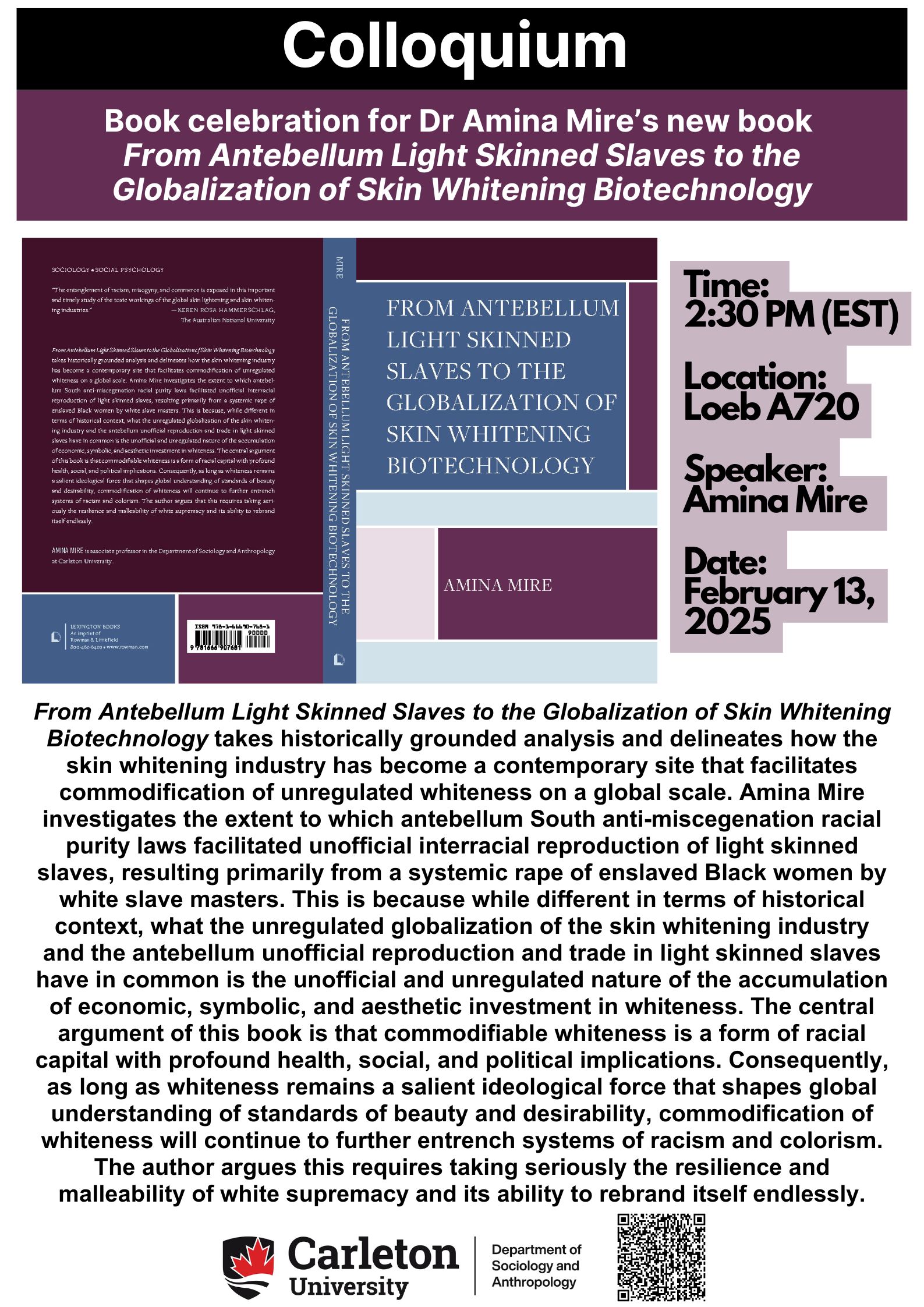Notice:
This event occurs in the past.
Book celebration – “From Antebellum Light Skinned Slaves to the Globalization of Skin Whitening Biotechnology” by Dr. Amina Mire
Thursday, February 13, 2025 from 2:30 pm to 4:30 pm

- In-person event
- A720, Loeb Building, Carleton University
- 1125 Colonel By Drive, Ottawa, ON, K1S 5B6
- Contact
- Kiley Johnston, kileyjohnston@cunet.carleton.ca, 6135202583
The Department of Sociology and Anthropology’s Colloquium Committee is pleased to invite you to the next event in our colloquium series: a celebration of Dr. Amina Mire’s new book, From Antebellum Light Skinned Slaves to the Globalization of Skin Whitening Biotechnology.
Event Details:
Title: Book celebration – From Antebellum Light Skinned Slaves to the Globalization of Skin Whitening Biotechnology by Dr. Amina Mire
Date: February 13th, 2025
Time: 2:30 P.M. (EST)
Location: Loeb A720, Carleton University or Zoom
From Antebellum Light Skinned Slaves to the Globalization of Skin Whitening Biotechnology takes historically grounded analysis and delineates how the skin whitening industry has become a contemporary site that facilitates commodification of unregulated whiteness on a global scale. Amina Mire investigates the extent to which antebellum South anti-miscegenation racial purity laws facilitated unofficial interracial reproduction of light skinned slaves, resulting primarily from a systemic rape of enslaved Black women by white slave masters. This is because while different in terms of historical context, what the unregulated globalization of the skin whitening industry and the antebellum unofficial reproduction and trade in light skinned slaves have in common is the unofficial and unregulated nature of the accumulation of economic, symbolic, and aesthetic investment in whiteness. The central argument of this book is that commodifiable whiteness is a form of racial capital with profound health, social, and political implications. Consequently, as long as whiteness remains a salient ideological force that shapes global understanding of standards of beauty and desirability, commodification of whiteness will continue to further entrench systems of racism and colorism. The author argues this requires taking seriously the resilience and malleability of white supremacy and its ability to rebrand itself endlessly.